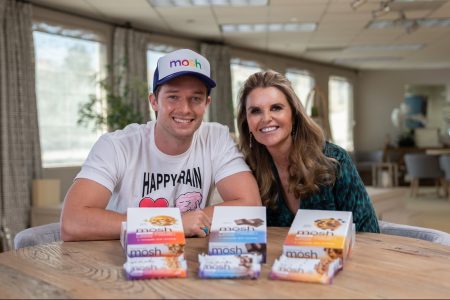- Between 2020 and 2021, organic food sales reached more than $57.5 billion.
- For a product to be labeled as “organic,” it must meet certain federal standards and cannot be bioengineered or produced with antibiotics or hormones.
- Annual growth of organic food sales outpaced that of some conventional food categories such as produce and grains.
- This article is for people who want to learn about sales growth in the organic food industry compared to the conventional food market.
The U.S. organic industry has shown healthy growth over the past few years. Its sales are outpacing those of comparable conventionally produced food and nonfood items, according to an industry survey. Driven by consumer choice, between 2020 and 2021, the organic food sector surpassed $57.5 billion in total value.
What qualifies as an organic product?
According to the U.S. Department of Agriculture, there are several standards products must meet in order to receive an “organic” label. Animal-based food products can be classified as organic if the animals they came from were not raised with antibiotics or growth hormones.
Other foods can be classified as organic if they were produced without conventional pesticides, synthetic fertilizers, bioengineering, sewage byproducts or ionizing radiation. A USDA-certified agent must also sign off on the production of any organic foods. Conventional foods, on the other hand, aren’t held to these standards.
Value of organic food sales
Overall sales in the organic industry reached more than $63 billion between 2020 and 2021, according to findings from an Organic Trade Association (OTA) survey. The organic food and beverage sector made up more than 90% of these sales. The survey found that organic food sales grew by 2% ($1.4 billion) during this period. The organic nonfood sector reached $6 billion in total sales.
Why organic sales are increasing
An empirical study published in the open-source scientific journal PLoS One in 2021 analyzes consumers’ motivation for buying organic foods. The study attributes the growth of organic sales to consumers becoming more conscious about their health. Many people believe organic foods contribute to a healthier diet than conventional foods.
Consumers have also become more concerned with the environmental effects of food production processes. Chemical fertilizers and synthetic substances can be harmful to the environment and, in turn, to consumers’ health. As a result, many consumers are more willing to purchase environmentally sustainable and organic products.
Many companies are embracing green trends and creating marketing strategies that further encourage shoppers to purchase organic products. As a result, more people are taking the time to learn about the potential benefits of consuming organic foods and using organic products.
In 2020, more than 94 million Americans purchased or used organic foods.
Who is most likely to buy organic products?
In the PLoS One study, the researchers analyzed the responses of the 279 participants who said they use organic products. They then considered demographic data such as each consumer’s age, gender, and income and education levels. The results show that consumers between the ages of 41 and 50 years of age are most likely to purchase organic products.
People with higher education and income levels are also more likely to buy organic foods. The results, however, do not suggest that a consumer’s gender affects their decision to purchase organic foods.
Growth of organic food sales outpaces conventional food sales
Research from BlueWeave Consulting predicts the organic food market will grow at an annual rate of 8.7%. At this rate, the market will be worth more than $95 billion by 2027. By comparison, the overall food industry is expected to grow by 3.8% annually through 2027.
As sales in the organic food sector continue to increase, the industry’s sales growth is, in some cases, outpacing that of some conventional food categories. For example, the Organic Produce Network’s annual produce report shows that the value of organic produce sales rose by 5.5% in 2021. The number of sales in this food category also increased by more than 2%. The value of conventional produce sales, on the other hand, increased by only 1.9% during this time. The sales volume of these foods decreased by 2.1%.
The growth of organic grains sales has also exceeded conventional grains sales. Organic flour sales, for example, rose by 51% from 2019 to 2020, while overall flour sales increased by 33%. To tap into these increasing profits, more crop farmers are moving away from conventional practices and are adhering to organic farming standards.
In some categories, such as produce and grains, organic food sales are growing faster than conventional food sales. Research suggests overall annual food sales will grow at a higher annual rate than conventional food sales.
Sales trends among organic food categories
The OTA survey found that organic fruit and vegetable sales totaled more than $21 billion in 2021. This amount was 4.5% higher than that of 2020. Organic dairy and egg sales increased by nearly 11% from 2019 to 2021. Organic meat sales reached nearly $2 billion in 2021, with poultry leading the category with more than $1 billion in sales.
Many customers are moving toward consuming more fresh foods instead of pantry items, causing a decline in preprepared and -packaged organic food sales. These sales fell by about 5% in 2021.
Near the start of the COVID-19 pandemic, many customers rushed to stock up on products such as canned soup, pasta sauce and nut butters. However, these sales decreased the most of all items within this organic food category in 2021. Organic snacks and baby food were the two products in this category whose sales had a healthy increase. They rose by 11% and 6%, respectively, in 2021.
Organic beverage sales increased in 2021 by 8%. With more people now working from home, organic coffee sales reached more than $2 billion that year. And as stay-at-home restrictions were lifted, many Americans were less reliant on baking to keep them busy. As a result, organic bread and grain sales plateaued around $6.2 billion.
Going organic means going forward
Only in one place is organic food growth set to potentially decline. The OTA predicts that international effects from the war in Ukraine could prevent organic grain sales from growing considerably in the near future. However, in virtually all other organic sales categories, great small business ideas abound. Acting on them could be a great way to build a thriving operation.
Read the full article here










